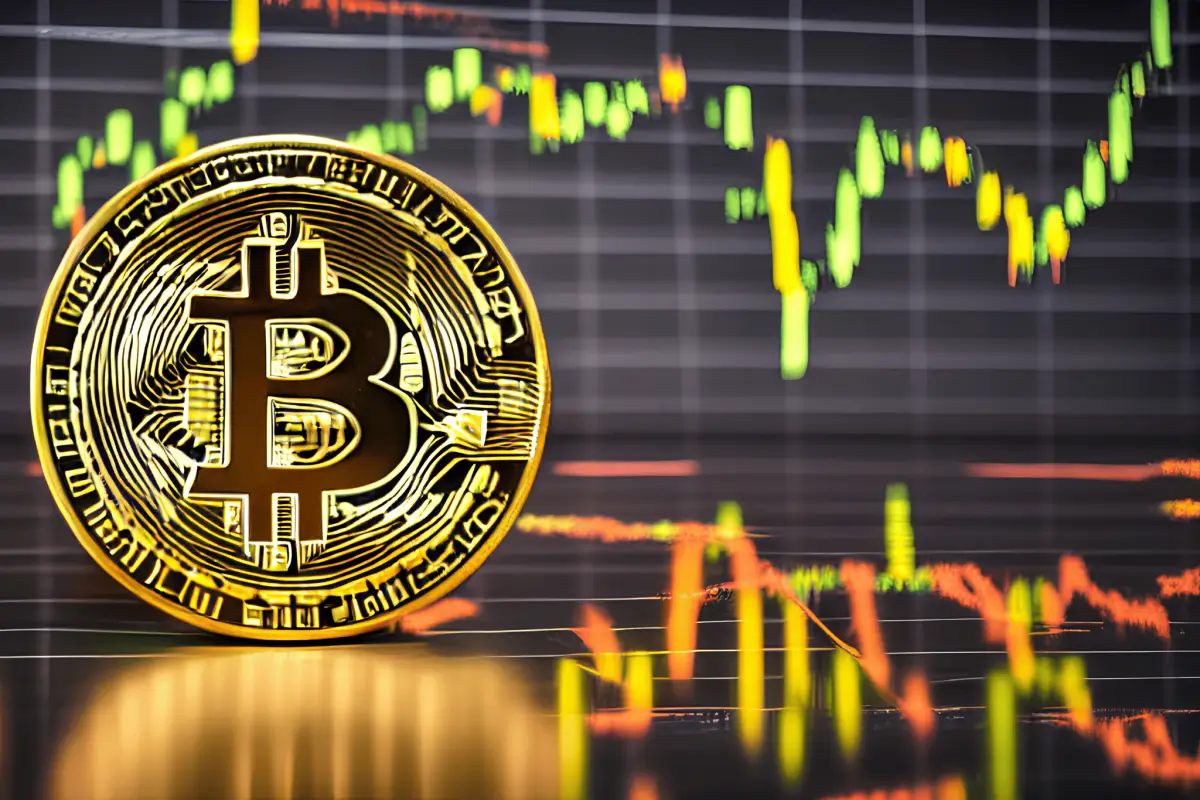Bitcoin Attracts $80 Billion Every Month, Driven by Institutional Investments
12.12.2024 17:30 1 min. read Kosta Gushterov
Bitcoin (BTC) saw a significant price surge of over 5% on Wednesday, bouncing back from a critical support range between $94,300 and $96,600 earlier this week.
The cryptocurrency briefly revisited its previous all-time high range before slightly retracting to trade around $100,780 by Thursday.
Meanwhile, Bitcoin Futures Open Interest (OI) saw a 6% increase, reaching approximately $62.8 billion. Despite this, Bitcoin’s funding rate has dropped notably, reflecting the recent wave of daily liquidations in the leveraged market.
Over the past year, the supply of Bitcoin on centralized exchanges has sharply declined, largely due to rising demand from institutional investors. In the last 30 days, about 120,000 BTC were withdrawn from these exchanges, leaving a remaining supply of around 2.23 million BTC.
Bitcoin’s growing institutional adoption is boosting its market outlook. According to data from Cryptoquant, long-term investors have been adding an average of $80 billion to Bitcoin every month over the past year, outpacing the total capital inflows of the past 15 years.
Whale investors, in particular, are accumulating Bitcoin in anticipation of potential approval for a U.S. strategic BTC reserve. In fact, U.S. spot Bitcoin ETFs saw a net inflow of about $223 million on Wednesday, pushing the total net inflows to approximately $34.58 billion.
-
1
Bitcoin Reaches New All-Time High Above $116,000
11.07.2025 7:56 1 min. read -
2
What’s The Real Reason Behind Bitcoin’s Surge? Analyst Company Explains
12.07.2025 12:00 2 min. read -
3
Canadian Bank Sees Bitcoin Hitting $155,000 by 2025
15.07.2025 10:00 1 min. read -
4
Peter Schiff Warns of Dollar Collapse, Questions Bitcoin Scarcity Model
12.07.2025 20:00 1 min. read -
5
Strategy Claims It Can Weather a Bitcoin Crash to $20K Without Trouble
16.07.2025 14:08 1 min. read
Bitcoin Risk Cycle Flips Again as Market Enters Safer Zone
Bitcoin’s market signal has officially shifted back into a low-risk phase, according to a new chart shared by Bitcoin Vector in collaboration with Glassnode and Swissblock.
Robert Kiyosaki Warns of 1929-Style Crash, Urges Bitcoin Hedge
Financial author Robert Kiyosaki is once again sounding the alarm on America’s economic health.
Metaplanet Adds $92.5M in Bitcoin, Surpasses 17,000 BTC Holdings
Metaplanet Inc., a Tokyo-listed company, has just added 780 more Bitcoin to its treasury. The purchase, announced on July 28, cost around ¥13.666 billion or $92.5 million, with an average price of $118,622 per BTC.
China and U.S. Plan Trade Truce Extension Before Talks: How It Can Affect Bitcoin
The United States and China are expected to extend their trade truce by 90 days. The extension would delay new tariffs and create space for fresh negotiations in Stockholm.
-
1
Bitcoin Reaches New All-Time High Above $116,000
11.07.2025 7:56 1 min. read -
2
What’s The Real Reason Behind Bitcoin’s Surge? Analyst Company Explains
12.07.2025 12:00 2 min. read -
3
Canadian Bank Sees Bitcoin Hitting $155,000 by 2025
15.07.2025 10:00 1 min. read -
4
Peter Schiff Warns of Dollar Collapse, Questions Bitcoin Scarcity Model
12.07.2025 20:00 1 min. read -
5
Strategy Claims It Can Weather a Bitcoin Crash to $20K Without Trouble
16.07.2025 14:08 1 min. read


